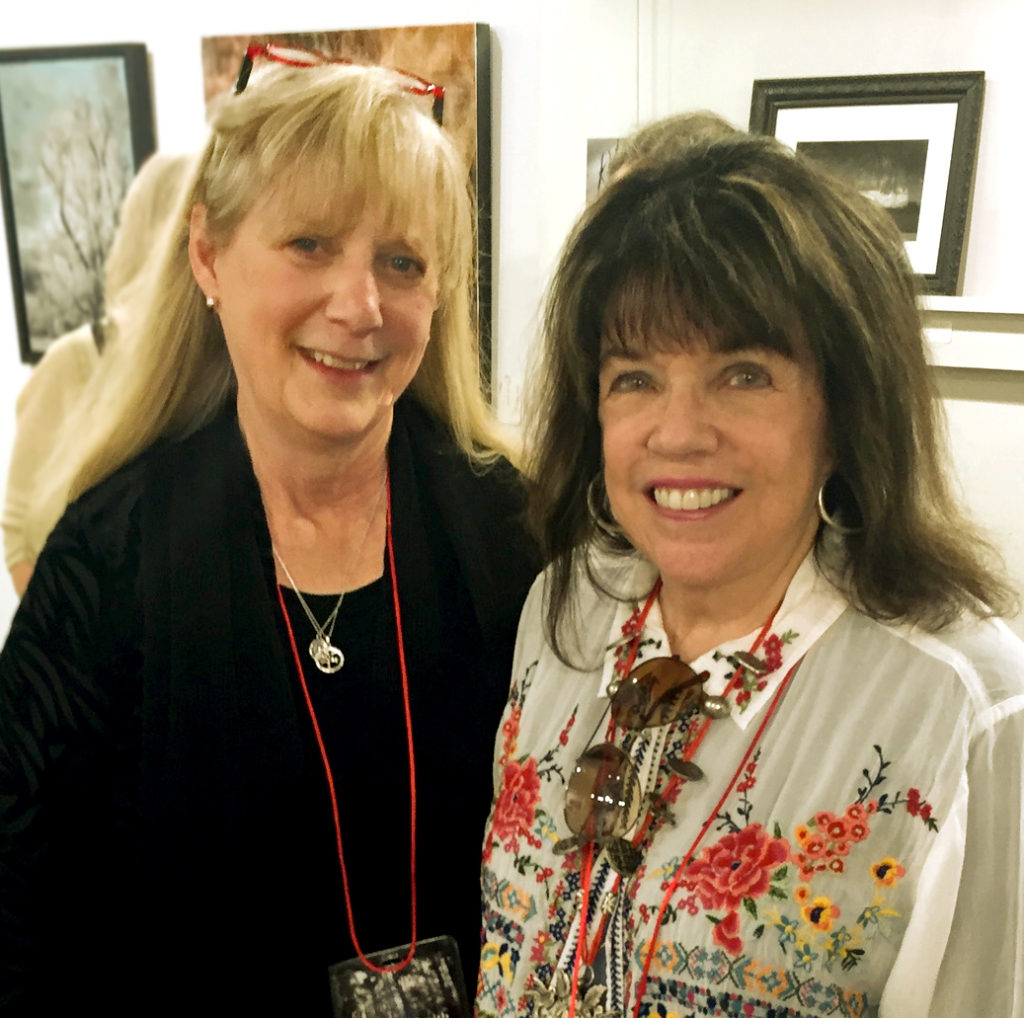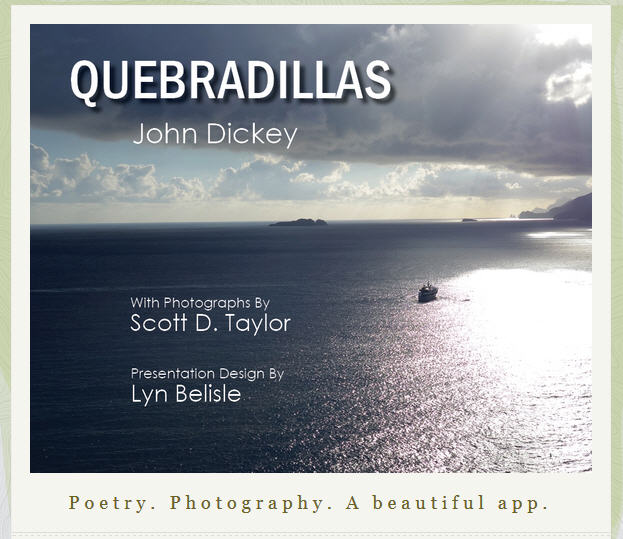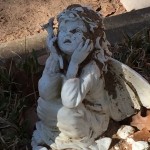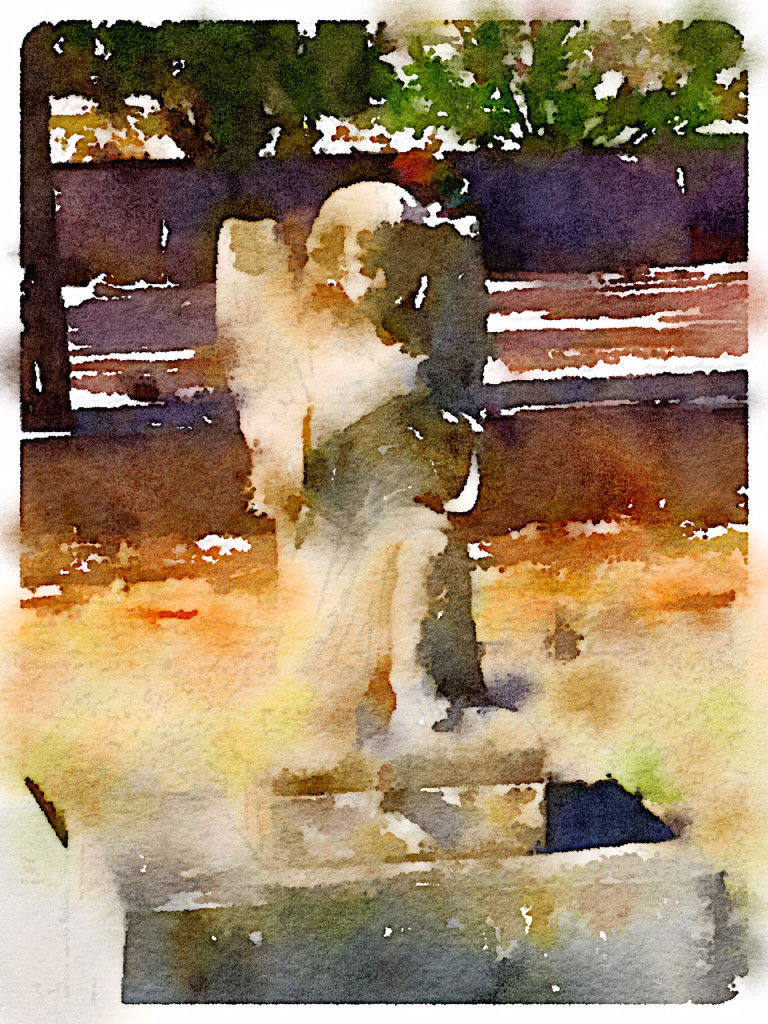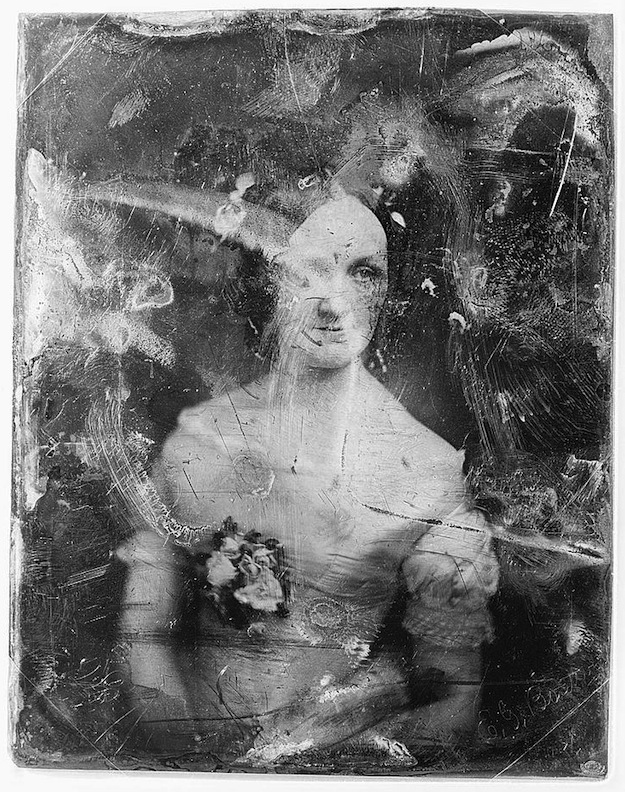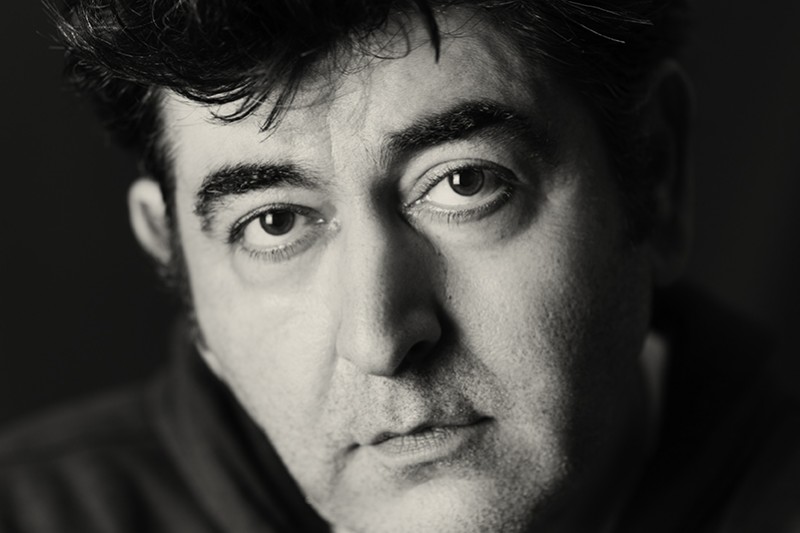Another enthusiastic workshop group met at my studio on Wednesday afternoon to explore collage, composition, and beeswax. Thanks to Marcia Roberts for organizing this great gathering. They were fantastic.

It’s my custom at the beginning of the workshop to give everyone a large packet of images that have been printed on regular letter paper with an inkjet printer. This insures that the paper is absorbent and will be “beeswax friendly.” I ask everyone to choose only from these images for their first collage.
This gives everyone choices within the same range of images, and it’s amazing to see how different each resulting artwork is. Here are a few of the images being arranged and veiled with white paint and asemic writing.

Then I showed them a tip that I want to share with you as well – how to use your own photos in an encaustic collage. I took a photo of Veronica while she was working at the table, then emailed it to myself from my phone. Here she is – great smile, right?

I went right to my studio computer, opened the email and the attachment, and showed everyone how to print out the photo in sepia tone. Then I adhered it to my demo collage and added some graphic elements such as veiling, asemic writing and stamps.

I continued the demo and showed how to apply a layer of beeswax, to incise, and to add pan pastels and book foil to the composition. It was fun playing with a photo of someone who was actually in the workshop, and Veronica got a collage portrait to take home!

I encourage you to take photos with your phone and email them to yourselves to print out and use in your work. It doesn’t even have to be a person – think orchids, cats, and spider webs!
Everyone in Wednesday’s workshop was really inspired – here are some of their encaustic collages. They paid attention to the composition lesson, and even though some of the packet images were similar, the results are beautifully original.

Veronica Miller

Maggie Fitch

Maggi Peachy

Catherine Danner

Marcia Roberts
I think these encaustic collage workshop are so useful and popular because the lessons on composition and layering can be used in any medium, from acrylic painting to fiber to journaling. And using your own phone photos gives a personal touch that makes this kind of art practice a unique statement of who you are.
Thanks for reading SHARDS!























 But isn’t it amazing what a seamless background can do for a photo, even an iPhone photo? And nobody has to know that you took it on your kitchen counter.
But isn’t it amazing what a seamless background can do for a photo, even an iPhone photo? And nobody has to know that you took it on your kitchen counter. 
